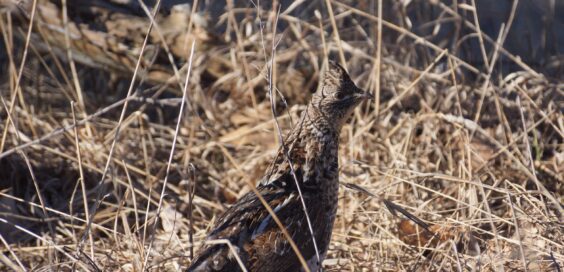
Creature Feature – Nature in Disguise
Posted by Dustin Horton // October 28, 2020 // Articles, Creature Feature
Although wild animals don’t trick-or-treat, many do disguise themselves through camouflage. Both predator and prey species improve their odds of survival by staying concealed.
Different animals use different types of camouflage. Gray squirrels employ ‘color matching’ to avoid the sharp eyes of hungry hawks and owls. The next time you see a gray squirrel in a tree, notice how it blends in with the bark. The fur along its back and tail may even have a greenish tinge that matches tree moss.
Another form of camouflage known as ‘disruptive coloration’ uses contrasting colors and markings like spots, splotches and stripes that help obscure an animal’s recognizable profile. The northern pike has a long, green body splashed with pale spots, allowing it to disappear in aquatic weed beds. Meanwhile, the barred and dappled plumage of the ruffed grouse makes it challenging to detect in shaded forests.
‘Self-decoration’ is a fascinating kind of camouflage where creatures use things within their habitat to disguise themselves. Both snapping and painted turtles exemplify self-decoration when they allow algae or tiny water plants to grow on their shells. The caddisfly larva spins a silk case for protection, then adds bits of sand, gravel and plant fragments. These decorations strengthen its mobile home and camouflages the caddisfly as it matures underwater.
Article and photo by Margie Manthey













